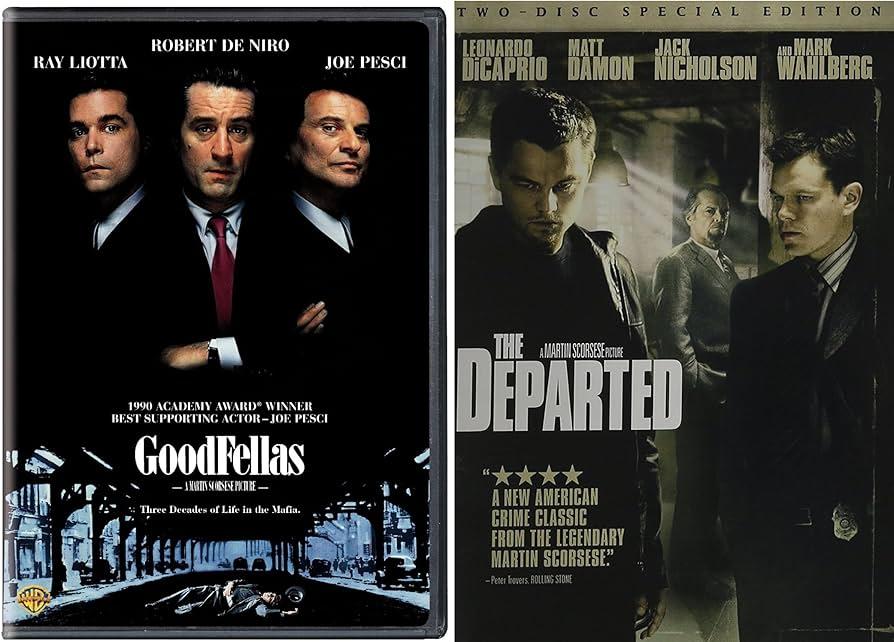Martin Scorsese, an iconic figure in the realm of cinema, has long been celebrated for his compelling narratives and masterful direction, particularly within the crime genre. His films, such as “Goodfellas,” “Casino,” and “The Irishman,” have not only captivated audiences but also sparked enduring debates about the portrayal of violence and morality. While some critics laud these works as incisive critiques of crime and its corrosive effects on individuals and society, others argue that they risk glamorizing the very violence they purport to examine. This article delves into the complex layers of Scorsese’s crime films, exploring whether they serve as a mirror reflecting societal ills or if they inadvertently glorify the brutality they depict. By analyzing key elements such as narrative structure, character development, and cinematic techniques, we aim to unravel the intricate relationship between Scorsese’s storytelling and the ethical implications of portraying violence on screen.
Understanding the Narrative Techniques in Scorseses Crime Films
Martin Scorsese’s crime films often employ a range of narrative techniques that serve both to engage the audience and to delve deeper into the psyche of his complex characters. One key technique is his use of voice-over narration, which offers an intimate glimpse into the thoughts and motivations of characters like Henry Hill in “Goodfellas” or Jordan Belfort in “The Wolf of Wall Street.” This narrative style not only provides exposition but also aligns the audience with the characters’ perspectives, creating a sense of empathy even as they navigate morally ambiguous worlds. Scorsese’s masterful manipulation of time through non-linear storytelling, as seen in films like “Casino,” adds layers of complexity to the narrative, allowing viewers to piece together the story in a way that mirrors the chaotic nature of the criminal underworld.
Furthermore, Scorsese’s films often feature dynamic camera work and editing, which serve to heighten tension and immerse the audience in the characters’ environments. The use of long tracking shots, rapid cuts, and slow-motion sequences not only convey the frenetic energy of the criminal lifestyle but also emphasize the consequences of violence. Recurring motifs and symbolism, such as religious imagery and the rise-and-fall arc of his protagonists, underscore the moral dilemmas and internal conflicts faced by his characters. These narrative techniques work in tandem to present a critique of violence, challenging viewers to question the allure and ultimate futility of the criminal path.
Examining the Impact of Violence Portrayal on Audience Perception
Martin Scorsese’s crime films, renowned for their intricate storytelling and complex characters, often walk a fine line between critiquing and glorifying violence. By delving deep into the psyche of criminals and their worlds, Scorsese crafts narratives that can be interpreted in various ways by audiences. This duality raises questions about whether these portrayals serve as a reflection on societal issues or merely glorify the violence they depict. Some key elements in his films that contribute to this discussion include:
- Character Development: Scorsese’s protagonists, often anti-heroes, are depicted with a depth that makes them both relatable and repulsive. This nuanced portrayal can lead audiences to empathize with their struggles, potentially overshadowing their violent actions.
- Visual Aesthetics: The stylized depiction of violence, with meticulous attention to detail and dramatic cinematography, can sometimes glamorize the very brutality it seeks to critique.
- Narrative Structure: By focusing on the rise and fall of criminal figures, Scorsese presents a cautionary tale that can be interpreted as either a warning or an inadvertent celebration of the criminal lifestyle.
These elements contribute to a complex audience perception, where the line between critique and glorification blurs, leaving viewers to grapple with their own interpretations of the moral implications presented on screen.

Balancing Artistic Expression and Moral Responsibility in Cinema
Martin Scorsese’s crime films, such as “Goodfellas” and “The Irishman,” often walk a fine line between showcasing the gritty realities of organized crime and potentially glorifying the very violence they aim to critique. The director’s signature style—characterized by dynamic storytelling, meticulous attention to detail, and compelling character arcs—brings audiences into the intimate world of his morally ambiguous characters. Scorsese’s films are renowned for their unflinching portrayal of crime, yet this very authenticity raises questions about whether viewers are more captivated by the allure of the criminal lifestyle than its inherent destructiveness.
Critics argue that Scorsese’s work may inadvertently romanticize violence through his use of captivating visuals and charismatic protagonists. Key points of contention include:
- The depiction of violence as a means to power and status.
- The focus on the personal triumphs and failures of criminals, which can humanize and even endear them to the audience.
- The potential overshadowing of moral consequences by the aesthetic appeal of the films.
However, supporters contend that Scorsese’s films serve as a profound critique of the destructive nature of crime, emphasizing the ultimate downfall and moral bankruptcy of his characters. The nuanced narratives often highlight the internal and external conflicts faced by individuals entangled in crime, encouraging viewers to reflect on the broader societal implications. Ultimately, the interpretation of Scorsese’s films as either glorifying or critiquing violence may depend largely on individual viewer perspectives and the context in which these stories are consumed.

Recommendations for Future Filmmakers on Depicting Violence
For filmmakers seeking to depict violence in a manner that is both responsible and thought-provoking, several key recommendations can guide the creative process:
- Contextualization: Ensure that violence serves a purpose within the narrative, offering insight into character development or thematic exploration rather than existing solely for shock value. Contextualizing violent acts can transform them from mere spectacle into a vehicle for deeper understanding.
- Character Consequences: Highlight the repercussions of violence on characters, both physically and emotionally. This approach not only grounds the narrative in reality but also encourages viewers to reflect on the true cost of violence.
- Avoiding Glorification: Be mindful of how violence is portrayed. Cinematic techniques such as glamorized cinematography, triumphant music, or glorifying dialogue can unintentionally glorify violent acts. Instead, opt for a presentation that reflects the gravity and complexity of violence.
By adhering to these guidelines, filmmakers can contribute to a more nuanced and critical portrayal of violence, prompting audiences to engage with the subject matter in a meaningful way.
